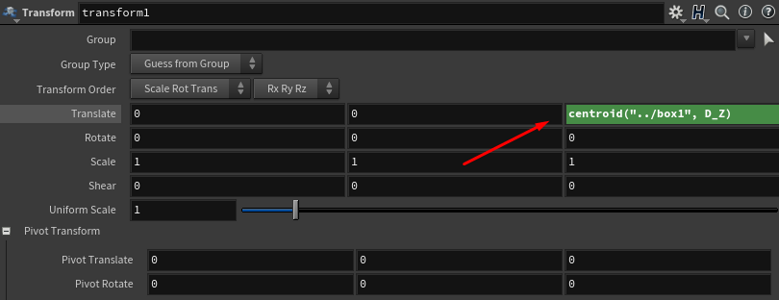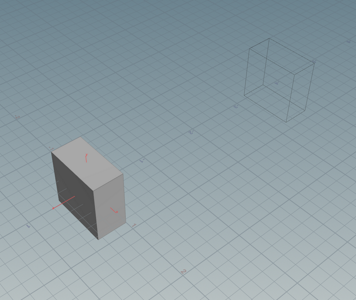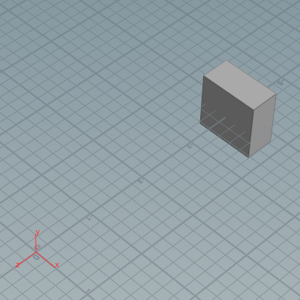Search the Community
Showing results for tags 'centroid'.
-
I am certain that this is a simple question, but I am still struggling with it. I have a vector attribute called "centroid" on a bunch of primitives, and I want to create a point cloud whose P values match the centroid positions. I could use any of David Kahl's methods here https://www.youtube.com/watch?v=iyZ8dIqJ47U if I wanted a point at the centroid of every prim, but instead I have several prims with the same "centroid" vector because I obtained it by running "extract centroid" over prim pieces via a for-each loop. My instinct is that this is a super simple VEX expression like: @P = @centroid; But that is obviously wrong. I also tried the set expression, but that didn't seem to work either. Is this like "promoting" an custom attribute into an intrinsic one like "P?"
- 5 replies
-
- centroid
- attribute wrangle
-
(and 1 more)
Tagged with:
-
Hello I'm doing a RBD (bullet) sim with custom concave geo (proxies) that I pack my self using assemble. I use a scatter and copy to points to set up my inital state, run the sim. I use a dopimport, and I would like to fetch the hi rez geo. Tutorials show that if I had the high rez geo scattered the same way I could plug it and it would work straight away. However I would like, with only my points, to retrieve the high rez geo. I thought I would use a foreach and apply primintrinsics or transformpieces or even a copytopoints as seen in some tutorials like here but nothign works, my scales and pivots don't seem to work. To give you an idea of what my network looks like before the dopnet: I cross posted on Sidefx forums but it wasn't published sorry for the crosspost. If you have any info on this I'm very interested.
-
Hello! I am new to coding. I assume my problem is that I don't fully understand Hscript's syntax and also I seem to struggle with explanation provided by official documentation. 1) First, just to make it clear, does "returns" mean: This function "gives/provides/sends"? 2) By "centroid information" it implies world coordinates of the object's centroid? 3) And by "surface node" it implies individual parameter cell where I write in my values? (btw how should I properly call those "cells/windows", are those parameter channels? confused...) 4) centroid type D_Z, what does "D" stand for? a. I placed a box and move it -4 in Z direction; b. I created Transform node and wrote centroid function in Z translate parameter cell: centroid("../box1", D_Z) = -4; c. -4-4=-8...; d. Oh... Ok... So when I put (-) before this function it looks like that -(-4) = +4 Which translates box into the world center. It means that I kind off answered to the first 3 questions myself. Right? : D 5) What is the difference between centroid and $CEZ? Why would I use one over the other? What are those "Global variables" and how do they differ from "Expression functions"? 6) Is bbox type D_ZSIZE just the distance value between D_ZMIN and D_ZMAX? Thank you!
-
Hi guys. Quick question.. why is this not working as a position to create a point in an Add node? centroid(`opinputpath(".",0)`,D_X) same for Y and Z Cheers
- 2 replies
-
- opinputpath
- add
-
(and 2 more)
Tagged with:
-
Good morning dear community As well as we can get a bbox boundaries and centroid using as well $CEX, $CEY, $CEZ or centroid expression, exist the possibility to get "pivot rotation" related to world space? Tried conversion of acos to degrees using dot from Normal Vector but without successfully results. Take in mind it came from point deformed animation with constant shape (Menas bbox remain constant during the whole length animation) Thank you very much
-
Hey everyone, So, I'm attempting to recreate this packed objects / dart throwing technique from Simon Holmedal. I feel I'm close, but I'm struggling with a n00b problem and was hoping someone could take a look and help me out. I have an attribute on the primitives that I want to drive the scale of the copied spheres. I've done an attribute wrangle on the primitives to create new points at the center of each which I plan to use as the locations for the copied spheres. I just can't seem to work out how to transfer the attribute AND delete the primitives. I'm not having any luck with the attribute transfer node. Any ideas? Thanks legends. DartThrowingAttempt.hip
- 4 replies
-
- houdini
- attribute transfer
-
(and 1 more)
Tagged with:
-
I am building out a Big Bang collision. I have a very large sphere that I use as the all encompassing universe. This is a static object. It is the Universe Sphere. I then have an RBD that I set the "center" parameter/attribute to the Universe sphere center channel. This sphere serves as the Big Bang, which has been fractured via Vonorni. I use a smaller sphere, whose "center" parameter is also set to the Universe Sphere center channel, as the initiator of the collision. I set the radius up for the Spheres. The Initiator Sphere is key framed with a Uniform Scale of 0 and then the very next frame it is set to 1. The size of this instantaneous expansion sets the velocity. I set the mass of the Initiator Sphere way up and I use a Position node to keep this Sphere for the most part locked down. I set bounce to 0, rotational spin to 0, and friction to 0. Over all, these settings, for the most part, keep the Initiator Sphere locked at the center of the Universe Sphere. However, I am getting a very slight wobble, before the Initiator Sphere settled down into a perfect center in reference to the Universe Sphere. What I am asking is what is the most efficient way to stop the wobble and lock the Initiator Sphere to the center of the Universe Sphere. I have looked at Constraints, however, the universe sphere is a static object, not an RBD, so I am thinking constraints will not work. I am looking for a very uniform collision across all out ward moving vectors, much like a uniform nuclear detonation. Any help would be much appreciated.









